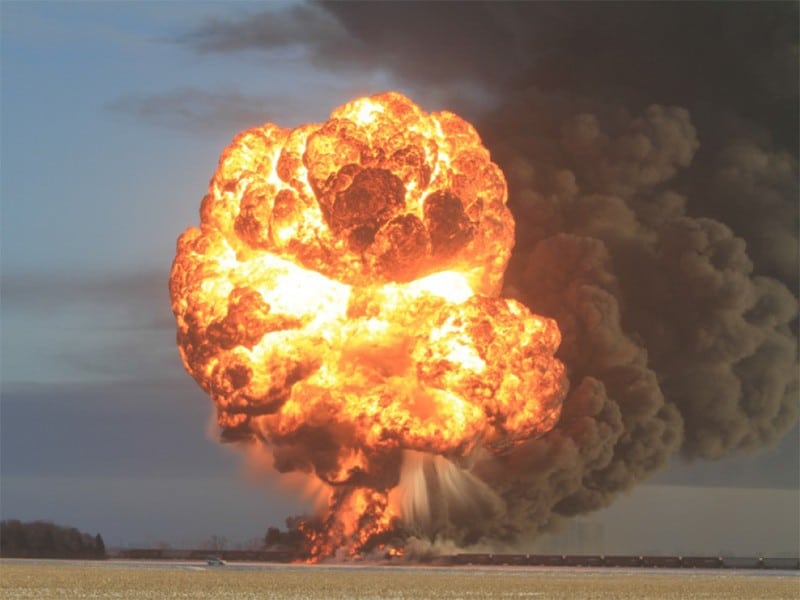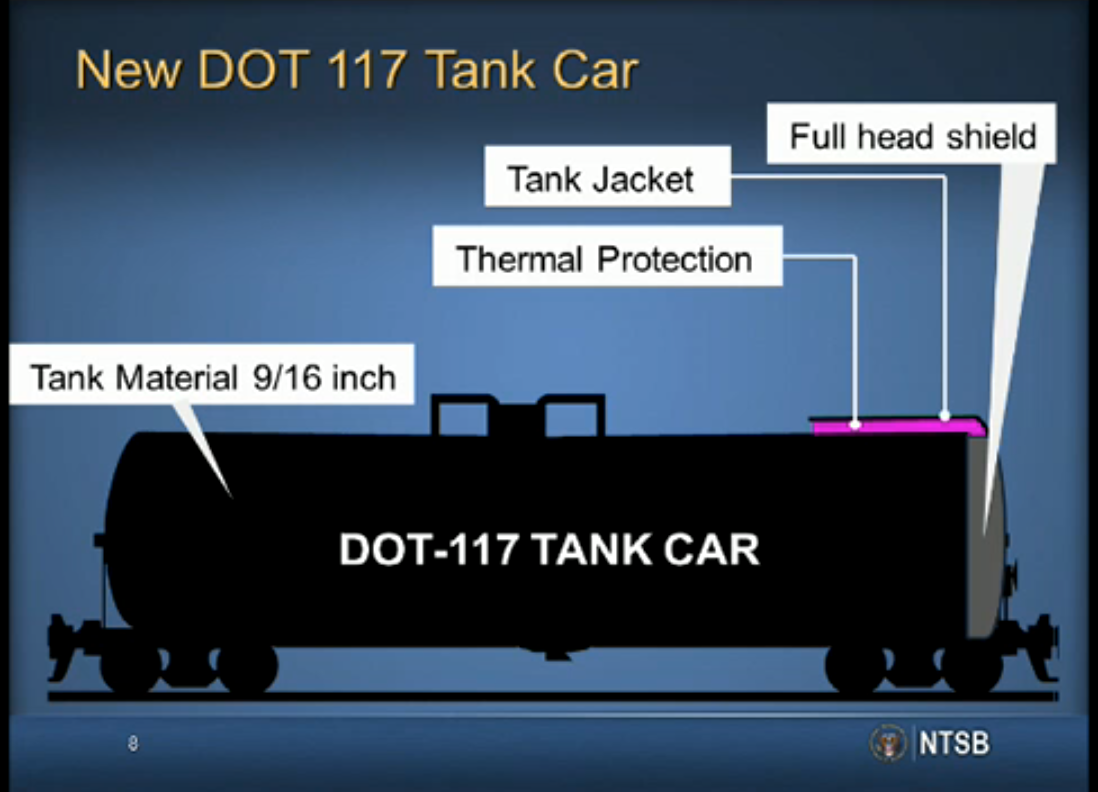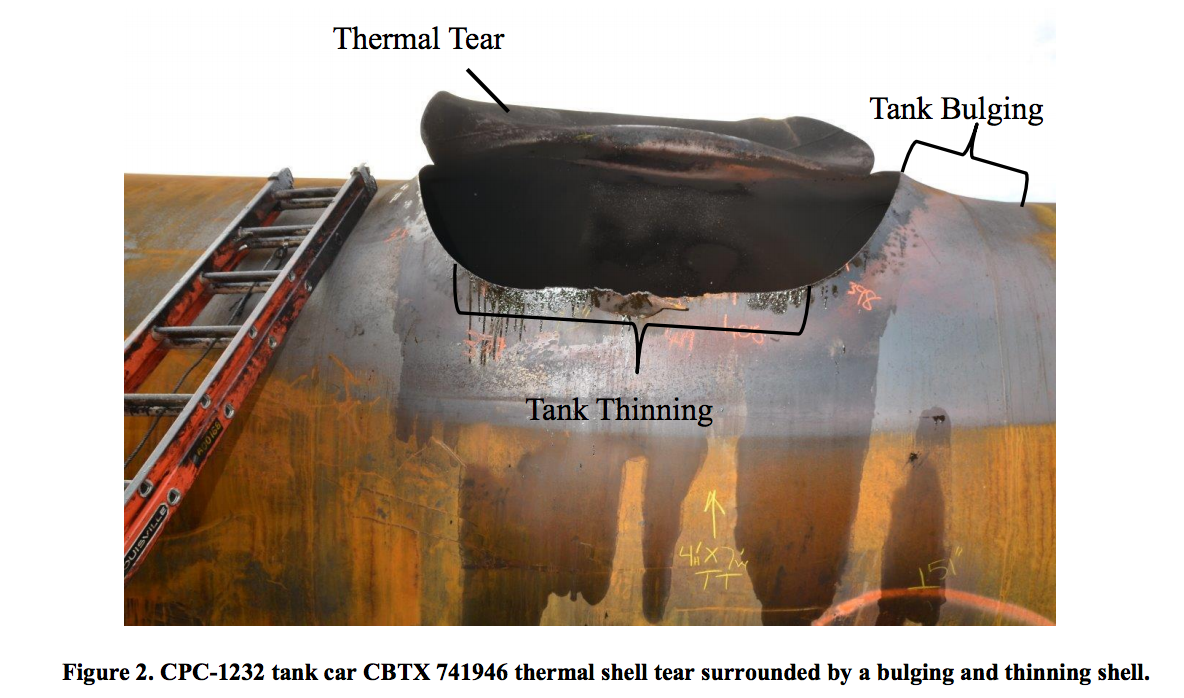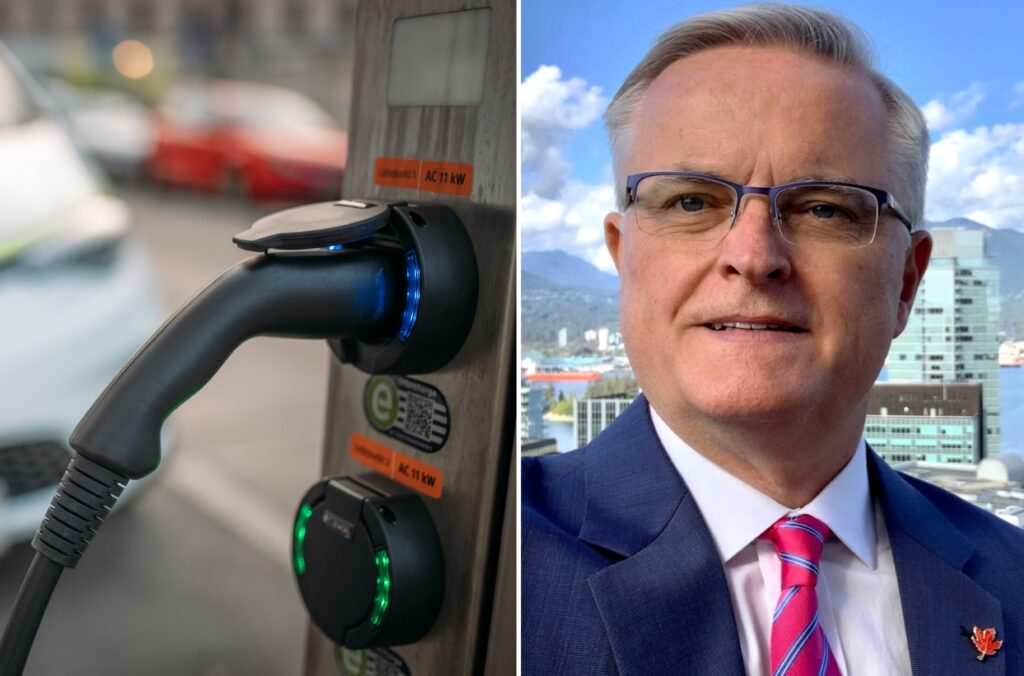In the most recent oil-by-rail accident in Mosier, Oregon the Federal Railroad Administration (FRA) concluded that the tank cars involved — the jacketed CPC-1232 type — “performed as expected.” So an oil train derailing at the relatively slow speed of 25 mph should be “expected” to have breached cars resulting in fiery explosions.
Current regulations allow those tank cars to continue rolling on the track carrying volatile Bakken crude oil and ethanol until 2025 with no modifications.
Yet industry lobbying group the Railway Supply Institute (RSI) has now requested the Federal Railroad Administration to essentially allow these jacketed CPC-1232 tank cars to remain on the tracks for decades beyond 2025.
This was just one of the troubling facts that came to light at the National Transportation Safety Board (NTSB) roundtable on tank car safety on July 13th, and perhaps the one of greatest concern to anyone living in an oil train blast zone like Mosier, Oregon.
Just Re-Stencil It and Call It a DOT 117
One of the biggest risks with Bakken oil train accidents is that often the only way to deal with the fires is to let them burn themselves out. This can result in full tank cars becoming engulfed in flames for hours or days in what is known as a pool fire. This can lead to a “thermal tear” in the tank and the signature mushroom cloud of fire so often seen with these derailments.
The new regulations address this issue by requiring tank cars to have a layer of ceramic insulation covering the entire tank car to prevent the oil from heating up to the point of creating a thermal tear (ceramic shown in pink in the image below.)
Image credit: NTSB
However, the RSI has requested the FRA to allow the existing jacketed CPC-1232 cars, like the ones in the Mosier accident, to not require the ceramic thermal protection.
The industry’s argument is that the current fiberglass insulation on the CPC-1232 is sufficient protection. However, the fact that the fiberglass insulation was not designed to protect the contents of a tank car from fire does not seem to bother the RSI.
At the same time the RSI is arguing against thermal protection for CPC-1232s, the RSI has helpful videos on its website explaining the new safety features for DOT-117 tank cars — including “thermal protection.”
The NTSB’s Robert Sumwalt summed up what this request would mean in one simple statement at the July 13 round table event saying, “the same type of cars as in Mosier can be re-stenciled as DOT-117R with nothing more than a new bottom outlet valve.” [R stands for retrofit.]
So, they are essentially asking to paint over the CPC-1232 label on the tank cars with a DOT-117 while doing nothing more than changing the bottom outlet valve. Which means we should expect many more accidents like Mosier in the future since most of these CPC-1232 cars are only a few years old and they have an expected working life of 30-40 years.
As Robert Sumwalt said in his opening statement explaining why we should expect many more fiery oil train derailments with the existing tank car fleet, “just do the math.”
Industry Arguments Laughable If Not For the Consequences
Would you believe that one of the arguments made at the roundtable in favor of not requiring thermal protection on these cars was that the oil itself acts as a heat sink? Which is true. Until the point where the oil absorbs so much heat from the fire that the tank car explodes.
However, the reason this argument is given credibility is that the regulations only require a tank car to endure sitting in a pool fire for 100 minutes without exploding. Forget the fact that many of the Bakken oil train accidents have involved fires that burned for days.
This 100-minute limit was the same reasoning used to justify the fiberglass insulation on the current jacketed CPC-1232 as offering sufficient protection, as per the industry request. Which led to the following exchange between the NTSB’s Sumwalt and RSI representative John Byrne.
Byrne: “In our own modeling the fiberglass insulation system met the federal requirement for thermal protection.”
Sumwalt: “But in reality in the fiberglass situation, doesn’t the fiberglass all just melt… doesn’t it also melt and all end up pooling down in the bottom in the void between the blanket and the shell?”
Byrne: “Basically yes…but at the same time, that whole system acts as a thermal protection system in that it meets the requirement based on the federal law.”
Sumwalt: “Ok, thanks. So it meets the requirements.”
So, along with the oil itself being offered as adequate thermal protection, we also get fiberglass that melts in a fire being offered as protection for anyone in the blast zone.
So what did the regulators have to say about this absurd argument?
FRA’s Karl Alexy made it clear that “industry” concerns were receiving serious consideration saying, “we’re not taking it lightly, we understand what it means to industry… be certain that we are taking this very seriously.”
Well, we do understand what it means to the industry. Adding ceramic thermal protection would cut into profits. And one thing that was made clear repeatedly during the day’s discussion was that this was all about the money and that safety was only for people worried about “risk.”
As usual when there is a discussion about oil train safety, the oil industry lobbying group the American Petroleum Institute had a seat at the table. API representative Susan Lemieux cut to the heart of the issue with some actual honesty.
“In the industry we don’t see transportation as a risk, it is just a function of business.”
Why try to improve the situation when you don’t see any risk?
The FRA and the Pipeline and Hazardous Materials Safety Administration have informed DeSmog that they will issue a formal response to the industry’s request to allow the fiberglass to qualify as thermal protection in the near future.
The Ground Rules – Profits Over Safety
In the above slide shown of the DOT-117, there is one other important thing to note. The shells on those tank cars are 9/16th of an inch thick. The shells of the jacketed CPC-1232 are 7/16th of an inch thick. This difference has safety implications as the thinner shells rupture more easily. The RSI points out this fact in a video on its website about the advantages of the thicker shells on the DOT-117 which they say are “less prone to puncture.”
But the more important difference, as we have pointed out repeatedly at DeSmog, is that safer car designs are heavier, which means they can transport less oil per car. That lower capacity again cuts into profits. This point was made by ExxonMobil in a slide they presented to regulators arguing against thicker tank shells.
While Exxon was not at the roundtable, plenty of oil and rail industry representatives were, and they made this point very clear.
Gabe Claypool, President of oil train operators Dakota Plains, explained why it made economic sense to use CPC-1232s over DOT-117s.
“A lot of it’s economics as well…we were just having a conversation around the sizing of the car, the 1232 car type is very much in abundance and it is also a larger car. In the current category of still trying to be profitable, if I can get that extra volume in a larger car that is still regulatorally [sic] compliant, they’re [sic] gonna stick with that.”
Richard Kloster of rail consulting firm Alltranstek was one of the more vocal participants during the roundtable and he repeatedly made points about the economics of retrofitting the CPC-1232 over buying the new DOT-117 saying, “The retrofit is always going to win economically.”
Kloster also made it clear where the industry put its priorities when it came to safety versus profit saying, “There has got to be a balance between safety and the economic viability of moving these products by rail” and that there were a “lot of cases, you know, where economics wins all the time but risk trumps economics in some cases.”
Economics wins all the time.
There was one representative from labor at the roundtable who did not offer a comment until the final closing segment, but he also shared the reality of what was driving the decisionmaking when he discussed the need for safety but stated, “I know it’s about money.”
ExxonMobil Wins Again
So, in the end, ExxonMobil and the oil industry have won again. Watching this roundtable and the many congressional hearings and previous NTSB events in the past few years and seeing the lack of progress on real safety improvements, it almost seems like this all was orchestrated from the start.
In the years leading up to the latest tank car rulemaking, the industry essentially ordered a whole new fleet of CPC-1232 cars which they are currently using. The CPC-1232 cars have the thinner tank shells which makes them more prone to puncture and also more profitable. And they are ok to use, unchanged, until 2025. If the industry request is approved, those cars will just need new bottom outlet valves after 2025.
Regardless, they will always have the thinner tank shells, like Exxon wanted.
At the end of the July 13 event, Robert Sumwalt made an interesting statement. He said, “some of us met yesterday to go over the ground rules.”
The meeting where they went over the ground rules was not open to the public or media. If one were to hazard a guess as to what the first and foremost ground rule set was, it would be a safe bet to posit it was that “economics wins all the time.”
Blog Image Credit: Dawn Faught via NTSB
Subscribe to our newsletter
Stay up to date with DeSmog news and alerts










